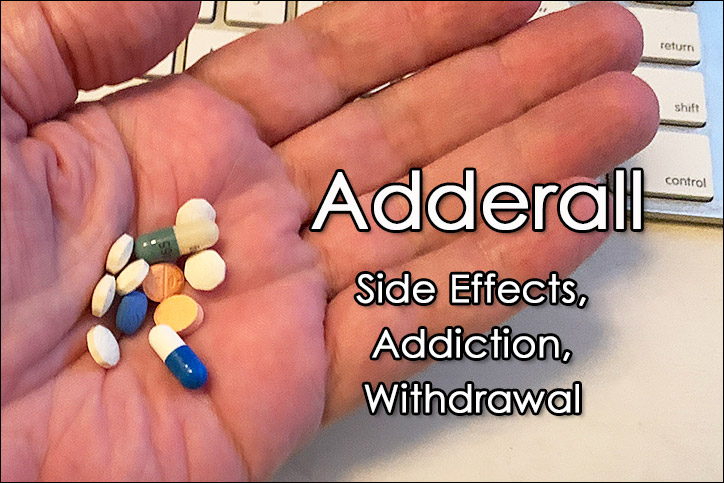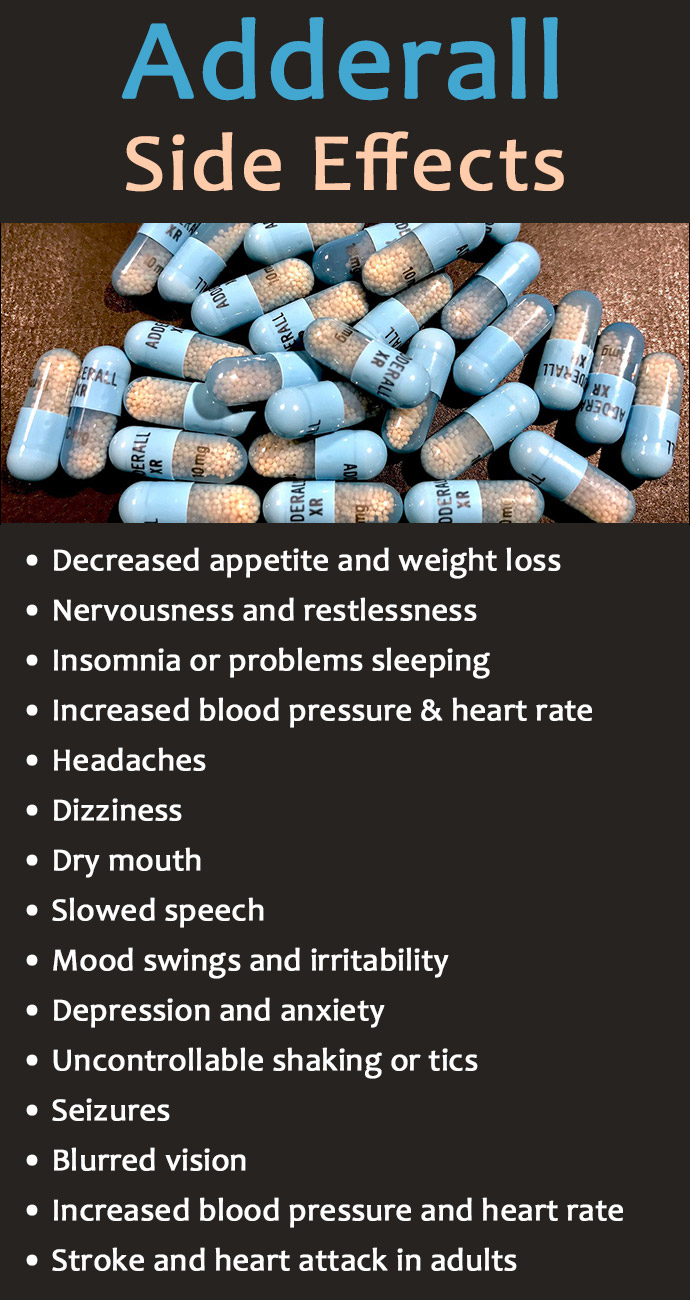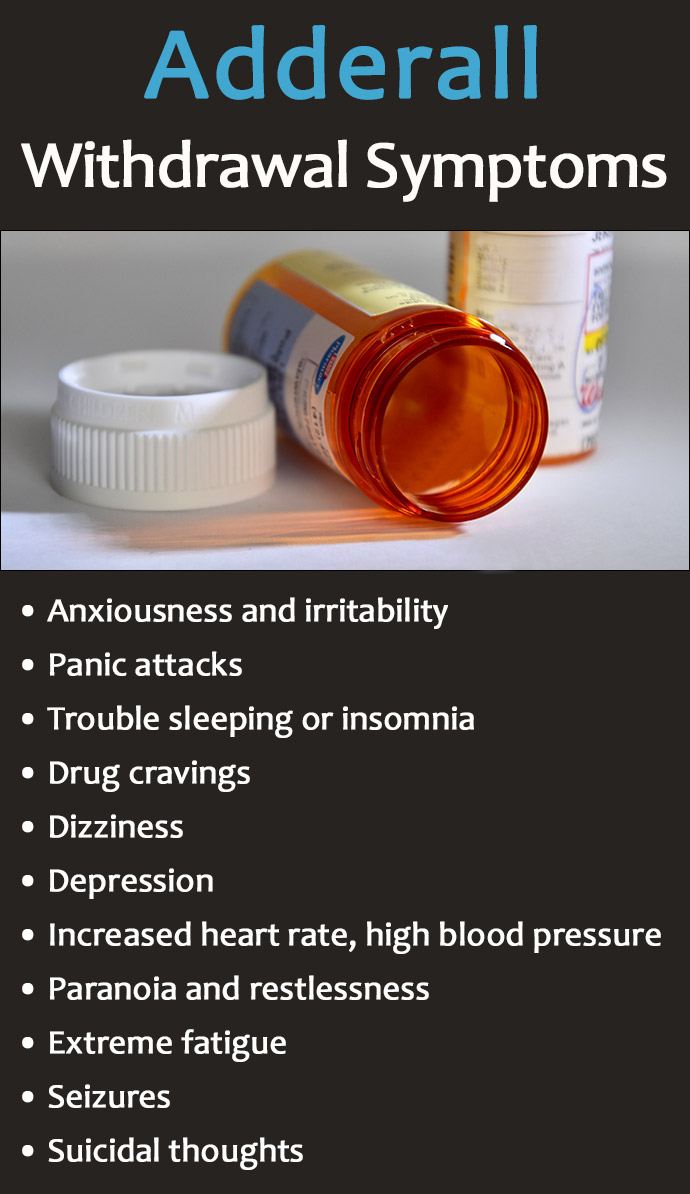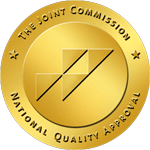Table of Contents
Adderall is effective for Attention Deficit Hyperactivity Disorder (ADHD) and narcolepsy when taken as prescribed. However, misuse or abuse of the drug can cause Adderall side effects, addiction, and withdrawal symptoms.
In recent years, there has been a shortage of stimulant drugs like Adderall because of increased demand, due in part to a rise in telehealth prescriptions, according to Medical News Today.
Adderall is most effective for those who need it to treat ADHD and narcolepsy, although it is widely misused by others to get a boost for school and work.
What is Adderall?
Adderall is a stimulant approved by the Food and Drug Administration (FDA) that includes a combination of dextro-amphetamine and amphetamine that acts on a person’s central nervous system.
It is a federally controlled substance and requires a prescription from a doctor for use as a medication.
Adderall is available in two formulations – Extended Release (XR) and Instant Release (IR).
Adderall XR Extended Release pills are taken in the morning and designed to last throughout the day.
Adderall IR Instant Release pills take effect more quickly than XR, but usually only last for 4 to 6 hours.
The National Institutes of Health (NIH) reports that using Adderall without a prescription or without medical guidance can lead to dependence or addiction.
At the correct dosage, Adderall helps people with ADHD calm down and focus more effectively.
Unfortunately, Adderall is a widely abused drug, especially on college and high school campuses because it is used as a “study drug.”
Some research suggests that as many as “20 percent of college students abuse prescription stimulants,” most often by using drugs that are not prescribed to them.
Adderall is also a popular drug for people trying to lose weight, individuals with eating disorders, those with stressful or demanding jobs, athletes, and people with a history of drug use.
Long-term misuse combined with other drugs can lead to polysubstance use disorder.
What Does Adderall Do?
Adderall stimulates the central nervous system to make people feel more alert, focused, and calm. It is typically prescribed at the lowest effective dose possible for those who need it.
When used as a prescribed medication, Adderall is effective for people with ADHD because it improves focus and reduces impulsive behavior by increasing the amount of dopamine and norepinephrine in the brain. It may also have an impact on serotonin levels.
Norepinephrine acts on the body’s cardiovascular system, affecting heart rate, breathing, and blood pressure.
Dopamine is a chemical messenger in the brain that reinforces pleasurable or rewarding behaviors.
While medication can be effective for many people, there are also healthier ways to increase dopamine naturally to improve mood and motivation.
Adderall Side Effects
Mild or serious Adderall side effects can occur even when taken as directed.
Taking antidepressants or medications for blood pressure, seizures, blood thinners, or decongestants can lead to unhealthy drug interactions and Adderall side effects.
Mixing Adderall with antidepressants may cause mild serotonin syndrome because both types of drugs can boost the levels of serotonin in the brain.
Mild side effects of Adderall include:
- Decreased appetite, stomach issues, and weight loss
- Nervousness and restlessness
- Insomnia or problems sleeping
- Increased heart rate
- Headaches
- Dizziness
- Dry mouth
- Slowed speech
- Mood swings and irritability
Serious Adderall side effects include:
- Worsening mental health conditions, such as depression and anxiety
- Uncontrollable shaking or tics
- Seizures
- Eyesight problems, including blurred vision
- Increased blood pressure and heart rate
- Stroke and heart attack in adults
Misusing Adderall increases the likelihood of serious side effects. This becomes even more dangerous when it is used with alcohol and other drugs.
Adderall Addiction
Adderall is addictive when taken at high doses or for a prolonged period of time, especially if it is not prescribed for ADHD.
The risk for Adderall addiction by individuals with ADHD is much lower and often not an issue because it is used properly and the dosage is monitored by a physician.
A user that develops a tolerance to the drug must take more of it to get the same effect as before.
Most individuals who take Adderall regularly will eventually need more of the medication to achieve the same results. This includes those using the drug without a prescription.
Long-term use can cause a psychological and physical dependence.
Adderall addiction is caused by:
- Using it without a prescription
- Taking more than the prescribed dosage
- Using the medication more frequently than needed
- Taking it for an extended time
Signs of Adderall addiction include:
- “Doctor shopping” to get more than one prescription of the drug
- Crushing, snorting, or manipulating Adderall to get faster and stronger effects
- Spending a lot of time trying to find more of the drug
- Cravings for the drug
- Developing a tolerance and dependence
- Withdrawal symptoms when not taking it
In the beginning, a person may feel they need the drug to boost their mental performance. This can become a habit-forming crutch that leads to addiction.
Taking large amounts of Adderall to experience a “high” can be dangerous. It also quickly builds a tolerance that leads to dependence, addiction, and withdrawal when trying to quit.
Adderall Withdrawal
People who become addicted will experience Adderall withdrawal symptoms if they try to quit or stop using it because they are no longer able to get more.
The withdrawal side effects are often referred to as an “Adderall crash.”
Adderall withdrawal symptoms include:
- Anxiousness and irritability
- Panic attacks
- Trouble sleeping or insomnia
- Drug cravings
- Dizziness
- Depression
- Increased heart rate or high blood pressure
- Paranoia and restlessness
- Extreme fatigue
- Seizures from overdose
- Suicidal thoughts from depression
The longer a person abuses the drug, the worse the addiction becomes. Fear of Adderall withdrawal is a big reason many people don’t seek the help they need to quit.
People with an addiction to the drug should not attempt to quit cold turkey, as it is safer to taper the dose.
Adderall withdrawal and addiction treatment is most effective at an inpatient rehab and detox facility.
Patients experiencing Adderall withdrawal should be medically supervised at a proper drug detox facility.
After the medication is safely out of a person’s system and the withdrawal symptoms have subsided, inpatient treatment and therapy will address the underlying causes of Adderall addiction.
Treatment modalities such as Cognitive Behavioral Therapy (CBT) and Dialectical Behavior Therapy (DBT) are effective for preventing relapse and setting the foundation for a lasting recovery.
Cognitive behavioral therapy techniques are beneficial for treating addiction and many types of mental health disorders.
Although the medication has shown to be highly effective for people who need it, Adderall withdrawal and addiction are always a concern for those who use it recreationally or without a prescription.
Seeking treatment before it becomes difficult to quit offers the best chance of recovery.
Photo Credit:
Adderall XR image by Benjamin Vincent Kasapoglu
Frequently Asked Questions
What does Adderall do if you don’t have ADHD?
Adderall increases levels of dopamine, norepinephrine, and other neurotransmitters to improve focus and attention.
Adderall normalizes brain function and can also have a calming effect for people with ADHD.
For people without ADHD, the drug overstimulates neurotransmitter activity that can produce a euphoric feeling accompanied by negative side effects.
The false sense of boost in focus and attention motivates people without ADHD to continue using the drug in higher doses.
Excessive or long-term use can create a tolerance and dependence that may lead to addiction and withdrawal symptoms.
How addictive is Adderall?
Adderall is classified as a Schedule II drug, which means it has a high potential for abuse, dependence, and addiction.
For people with ADHD and others who use it as prescribed by a doctor, the risk of addiction is low.
The risk of Adderall addiction is highest for people who use it without a prescription in high doses or for an extended period.
Why do some people experience Adderall side effects like depression or mood swings after they stop taking it?
Adderall increases neurotransmitters associated with mood and motivation. With long-term use, the brain relies on the drug to stimulate these neurotransmitters.
After stopping the use of Adderall, the brain is unable to adjust properly and the user experiences low levels of dopamine and other neurotransmitters, which can cause depression and unhealthy mood issues.
Does gradual tapering reduce Adderall side effects like depression and mood swings when trying to quit?
Yes, gradually tapering the dose of Adderall when trying to quit can reduce depression and other mood issues.
Anyone trying to quit should consult a doctor for monitoring and a proper tapering schedule to avoid negative side effects.
For people addicted to Adderall or those experiencing severe withdrawal symptoms, an addiction detox facility may be necessary to quit using it in a safe and comfortable environment.
How can I minimize Adderall health risks when using it for ADHD?
The health risks of taking Adderall for ADHD are minimized by closely following the directions as prescribed by a doctor.
Only take it according to the daily schedule and never increase the dosage without speaking to the prescribing doctor first.
Consult with your doctor if you notice any physical or psychological changes while taking it. This includes changes in mood, heart rate, and blood pressure.
Regular health screenings will ensure it is not causing any issues of concern.
It is considered safe and effective for people with ADHD when taken as prescribed.
Do Adderall side effects go away?
When taken as prescribed for ADHD, Adderall side effects tend to fade and disappear as the brain and body adjust to it.
Each person is affected differently, and factors such as age, dosage, and daily schedule all play a role in the severity of side effects.
If symptoms persist, it may be necessary to reduce the dose or change the daily schedule.
People who don’t have ADHD and take it without a prescription in high doses are most at risk for negative side effects.
How long do Adderall withdrawal symptoms last?
Adderall withdrawal symptoms will vary for each person depending on the length of time they have been taking it and the daily dosage.
The initial Adderall crash occurs for one or two days after the last use.
Anxiety, depression, and cravings for the drug may last for about a week.
After that, most symptoms will generally last for several weeks and gradually fade.
Post-acute withdrawal symptoms can persist for several months after prolonged or excessive use.
What is Adderall prescribed for besides ADHD?
Adderall is only FDA approved for ADHD and Narcolepsy.
It is not approved for weight loss or physical and mental enhancement.
Adderall addiction poses the highest risk when used for anything other than FDA approved conditions.





